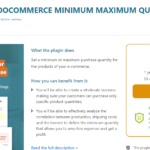How To Leverage Automation For Digital Transformation
Over the years, digital transformation has emerged as a pressing issue for business leaders. Every company wants to do it, regardless of its size and scale. It is a good decision because of the benefits that come in tow. Moreover, skimping on a digital transformation can put you far behind your competition in the industry. While the transition seems so crucial, driving the change is easier said than done. Cost is often the biggest concern, specifically if you run a small business with money constraints. Employee resistance to complex technologies is another challenge you can expect to face.
But you must not let apprehensions stand in the way of digital transformation because the investment is worthwhile. The good thing is that the change is less scary than you imagine, provided you take the right route. Let automation lead the way, and things will be a lot easier to manage. Speed and agility are equally crucial as innovation must operate at the pace of business. Let us explain how you can leverage automation to drive digital transformation for your company.
Pick the processes that can be automated
As a rule, businesses must automate every process that can be automated. Everything boils down to picking the right ones and investing efforts in them. If you fail to be selective, you may end up wasting time and money on company-wide automation without getting the desired outcomes. Ideally, you must choose repetitive, time-consuming tasks such as file transfers, employee onboarding, customer onboarding, and ETL operations.
Consider it as intelligent automation that helps your business become innovative and agile without spending a fortune. Moreover, you need to see it as an initiative that opens new possibilities rather than only cuts costs for your business. It frees up the employees to be more creative by eliminating the burden of repetitive, manual tasks. They can invest time and effort into finding ways to enhance the business.
Think beyond a single solution
When it comes to automation for digital transformation, there isn’t a single silver bullet that will do the magic. You cannot expect to find one tool to solve all organizational challenges and address process needs. A set of tools and solutions is the key to a successful initiative. But as with processes, you have to take a selective approach rather than pick solutions randomly and create a complex ecosystem with countless tools.
Ideally, you need to keep things simple and manageable at all levels. Consider adding tools that redefine how the work gets done and create a digital workforce for your company. It is best to skip the ones that do not serve value. You can even audit the automation toolset from time to time and eliminate the redundant ones. A declutter mode keeps things clean and efficient.
Coordinate control on the automation solution
Picking the right tasks and solutions is only the first step. The implementation of automation is even more crucial. You can take a traditional approach to it or do it in a modern way. The traditional approach embraces small solutions for specific problems as they arise. Conversely, the modern mindset takes an enterprise-wide approach where you plan the system in advance. As an organization grows, the modern approach is more apt. Disparate and randomly added tools become challenging to navigate and understand, but the new mindset makes it simpler.
A holistic solution is far better as it enables seamless integration with a broad range of platforms, applications, and technologies. Add an HMI (Human-Machine Interface) to the mix, and you have the foundation of automation. An HMI is a dashboard that connects your workforce to machines and systems so that they can interact with it for better coordination and control. The ability to use a single dashboard to control the automation environments accelerates innovation and saves time for the employees.
Utilize predictive analytics
The success of an automation initiative hinges on the agility to quickly respond to new issues, challenges, and processes. Leveraging intelligent analytics is a good idea as it lets you optimize workflows and improve IT productivity and speed. These tools come bundled with enterprise automation solutions, so the IT team can use them to derive new insights about their environments. It enables them to innovate more, move faster, and provide the agility to stay competitive.
Predictive analytics analyzes the current and historical data to get insights into the viability of the automation initiative during digital transformation. Your IT team can combine it with machine learning to minimize slack time and idle machine resources. In the end, you get more with less and feel more confident about doing things right. If the automation initiative seems to lack somewhere, you can improve it with the necessary changes there and then.
View automation as a strategic tool
When it comes to using automation to lead digital transformation for your business, you must view it as a strategic tool. Effective end-to-end process transformation is all about optimizing how work gets done in your organization. It needs to align with a larger digital strategy rather than stay at the process level. When you implement automation, set clear expectations around the capabilities of the tools. Also, understand how you can leverage them to create a successful strategy that takes the business a step closer to digital transformation.
If you follow a strategic approach, the journey becomes much easier, and the benefits come faster. Intelligent and strategic automation sets you up for more than cost savings and revenue generation. It also enables speed, accuracy, compliance of execution. The benefits keep growing in the long term, and digital transformation becomes a continuous process for the organization. Further, strategic solutions enable the team to respond to business pressures better and faster.
Automation has immense potential that goes beyond just improving the business processes. It can lead to a bigger change that gets you ahead on your digital transformation journey. Just take the right approach, and you can leverage it to boost your transformation strategy. Follow these simple steps, and you are good to go!

















